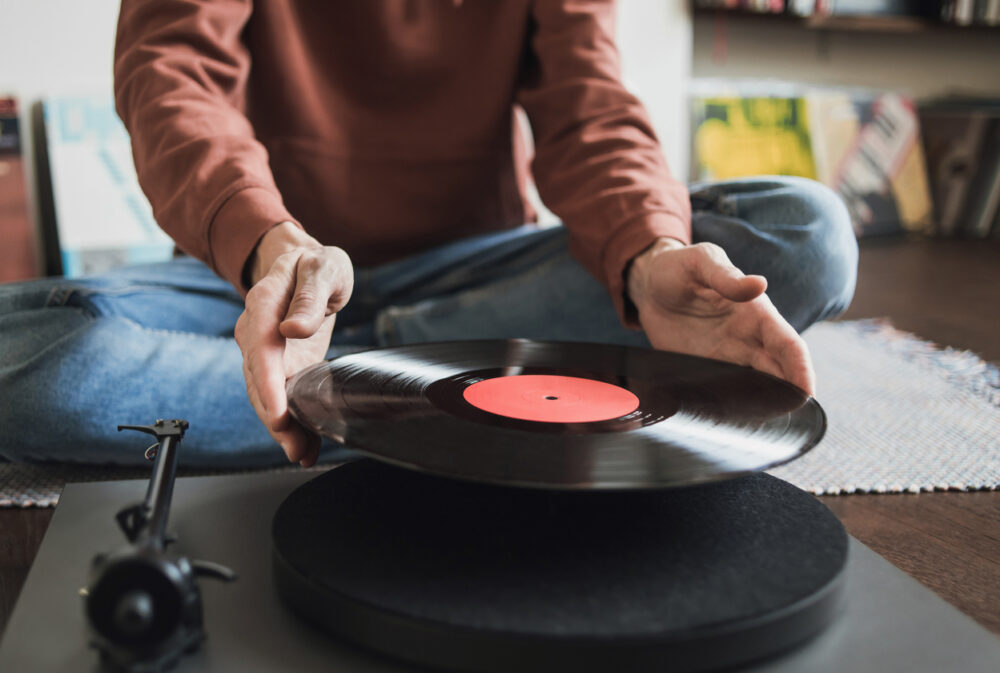Low-tech pleasures that feel like a rebellion.

In a world of endless notifications, algorithmic feeds, and digital demands on our time, a growing number of young people are finding solace in low-tech pleasures. These aren’t just quaint hobbies; they are a conscious, deliberate rebellion against the digital world’s constant clamor for our attention.
By embracing analog activities, they are reclaiming their time, mental space, and sense of purpose in a way that feels surprisingly radical.
1. Reading a physical book instead of a tablet.

The act of reading a physical book is a deliberate rejection of the distractions inherent in a digital device. The rustle of paper, the smell of the pages, and the physical weight of the book provide a sensory experience that a tablet can’t replicate. It forces you to focus on a single task without the temptation of notifications.
This choice is a powerful act of digital minimalism. By choosing a physical book, you are creating a space for deep concentration and focused engagement, which feels like a rebellious act in a world designed for constant distraction.
2. The simple satisfaction of a handwritten letter.

In an age of instant emails and fleeting text messages, the act of writing and sending a handwritten letter is a radical choice. It requires time, effort, and intentionality, sending a clear message to the recipient that they are worth the extra thought. The tangible letter itself becomes a keepsake, a physical object filled with meaning.
This low-tech practice is a powerful statement about valuing connection over convenience. It’s a way to slow down, express genuine sentiment, and create a lasting, physical artifact in a digital world of disposable communication.
3. The purposeful effort of making a physical photo album.

In a world where thousands of photos sit on a phone or in a cloud, the purposeful act of printing out photos and assembling a physical album is a form of rebellion. It’s a way to curate and honor specific memories, transforming fleeting digital files into a tangible, permanent record.
This analog project is a rejection of the endless, unorganized stream of digital images. It allows you to create a personal, tactile archive of your life, making memories feel more real and significant than they do in a phone’s gallery.
4. Engaging in creative hobbies without the pressure to post.

Finding a creative outlet purely for personal satisfaction—without the pressure to post it on social media for likes and comments—is a quiet rebellion. Whether it’s painting, writing poetry, or playing an instrument, engaging in a hobby solely for the joy of it frees you from the performance of online validation.
This low-fi pleasure allows you to be in the moment and create for yourself. It’s a way to reclaim creativity from the demands of the algorithm, turning a personal passion back into a source of private joy rather than public currency.
5. Learning a skill from a book or real person, not a YouTube tutorial.

While digital tutorials are incredibly useful, there’s a unique satisfaction in learning a skill from a physical book or a real person. Reading instructions on a page or getting hands-on guidance from a mentor offers a different kind of focus and connection. It’s a more deliberate and grounded way to acquire knowledge.
This choice is a resistance to the instant, often fragmented nature of online learning. It honors the value of traditional knowledge transfer and provides a deeper, more intentional way to master a new skill, creating a lasting and meaningful connection to the process.
6. The joy of a focused, screen-free evening.

Choosing to spend an evening without screens—no TV, no phone, no computer—is a radical act in a world designed to keep us constantly entertained and connected. This choice allows for genuine rest, conversation with loved ones, or simply quiet reflection, activities that often get pushed aside by digital distractions.
This intentional disconnection is a powerful way to reset and recharge your mental batteries. It proves that true relaxation and connection can be found by unplugging, showing that you don’t need a screen to fill your time or feel alive.
7. Listening to an entire album from start to finish.

In an age of shuffled playlists and skipping songs, the act of listening to an entire album from start to finish is a form of deep engagement. It honors the artist’s original vision and narrative flow, allowing you to experience the music as a cohesive body of work. This intentional listening is a rare and rewarding practice.
This low-fi pleasure is a rejection of passive, background listening. It’s a way to fully immerse yourself in a creative work, offering a deeper appreciation for the art that is often lost in our fast-paced, digital world.
8. Using a paper map for a road trip or hike.

In a world of GPS and constant digital guidance, the act of navigating with a paper map is a conscious rebellion. It requires you to be present, to pay attention to your surroundings, and to exercise a different kind of spatial reasoning. Getting a little lost becomes part of the adventure, not a failure of technology.
This practice is a way to reclaim a sense of exploration and independence. It allows you to engage with the world in a more tactile and intuitive way, free from the voice of a digital assistant telling you exactly where to go.
9. Cooking a meal from a physical cookbook.

The digital world is full of recipes, but cooking from a physical cookbook is a low-tech pleasure that feels like a rebellion. It’s a sensory experience: the feel of the pages, the splatters on the cover, and the clear focus on one recipe without pop-up ads or links. It’s a more deliberate and mindful way to create a meal.
This simple act honors the tradition of culinary knowledge and the joy of cooking without digital distractions. It turns a routine task into a calming, focused activity that connects you to your food and to the process of creation.
